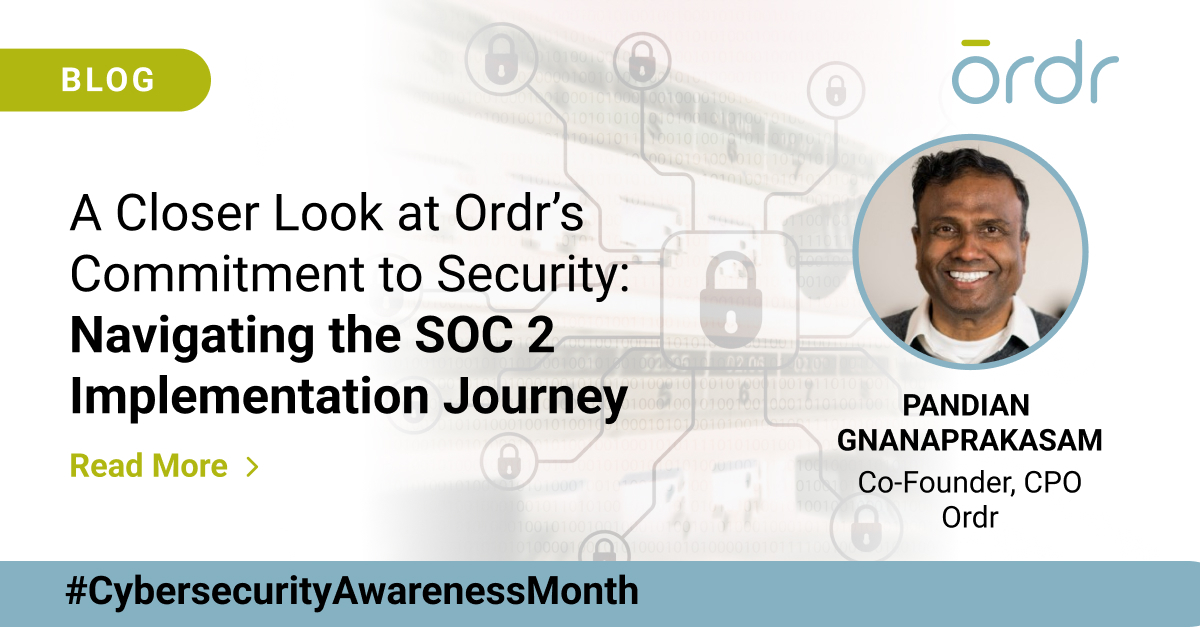When the 2022 Verizon Data Breach Investigations Report (VDBIR) came out at the end of May, I was preoccupied with closing Ordr’s $40 million Series C investments and, while I gave it a quick read at the time, I didn’t get around to taking a close look until this past weekend. The VDBIR always contains a wealth of information, and like most people in the information security industry, I read through many studies to keep abreast of trends and look for clues that point to what’s next.
I especially look forward to seeing what is new in the VDBIR. Over the last 15 years the team at Verizon has done yeoman’s work quantifying the way threats have played out, tracking things like ransomware and digital supply chain attacks, helping to raise awareness of the need to improve the ways enterprises secure their networks, data, and people. It is incredibly useful and has the advantage of its deep history.
Reading Between the Numbers
After skimming the 108-page 2022 report, and examining more closely the sections calling out healthcare, manufacturing, finance services, and other industries that call on Ordr to protect them from the threats to their extensive connected device inventories, something caught my attention. At first I couldn’t quite figure out what it was that made the numbers stand out to me, but then it hit me.
In the introduction, the scope of the report is quantified as “23,896 security incidents, of which, 5,212 were confirmed data breaches.” Those numbers are intended to impress upon the reader the magnitude of the problem and to convey the impressive effort involved in producing the report year-after-year. But they reveal a much bigger problem for those organizations that depend on our industry to protect them from the schemes of cyber criminals: the critical importance of accurate data in cybersecurity detection and response. Let me explain what I mean.
Bad Data is Costly
Bad data–whether inaccurate, incomplete, or obsolete–is the root of many persistent problems vexing cybersecurity, including false positive security events. Each of those nearly 24,000 incidents took time and resources away from the organization whose security team had to investigate and determine whether or not an attack had taken place. And when you consider that data in light of a recent article in CSO Magazine reported that reported security teams waste thousands of hours and hundreds-of-thousands of dollars each year chasing their tails because of false positive incidents, the impact of bad data gets worse.
False positive security incidents may account for as many as 45% of all security events.
According to CSO Magazine, false positive security incidents may account for as many as 45% of all security events. That means that of the 23,896 security events used in Verizon report, there were nearly as many incidents that also had to be evaluated before determining whether they were actual indicators of compromise (IoC) or false positive events, wasting time and resources, but also causing signal fatigue through the boy who cried wolf effect, making organizations less secure because security teams become conditioned to expect to find no threat. When security evaluations and decisions are based on bad data, the natural response is to adjust the systems designed to detect anomalies to be less sensitive. This reduces the workload for human analysts, but it also increases the chance that actual IoCs will go unnoticed.
Imprecise data begets imprecise results, and imprecise results increase risks to the enterprise. The remedy, therefore, is more data–and more precise data.
Building on a Foundation of Excellent Data
When we set out to develop the technology that became the Ordr platform, we knew we had to build something that was engineered from the start to address the problem of false positive signals. We also knew we needed to focus on discovering and protecting connected devices, so we created an Ordr Data Lake populated with data specific to millions of devices; then we applied artificial intelligence and machine learning to run behavioral analytics to develop security models for each device.
That combination of Ordr Data Lake, our behavioral analytics engine, and comprehensive, real-time discovery of devices is powerful. Deep packet inspection of network traffic along with granular device context (including properties like operating systems, patches, and software installed and network connectivity) flows to our Ordr Data Lake along with all of the flow data that the device transacts. Using this rich data, our AI-powered behavioral analytics engine along with standard threat detection methods, like intrusion detection signatures, URL/IP reputations, and other unique techniques forms a very accurate profile of a device, and identifies ones with vulnerabilities, risks and anomalies.
Deep and Unrivaled Device Data
Today, the Ordr platform is informed by a body of threat intelligence and device-specific data that is unrivaled in its scope and scale. What’s more, Ordr is constantly enriched with an influx of new data, including real-time packet capture and analysis across each customer environment. That feeds our platform with an accurate, continuous, and correlated input of data from every connection, flow, and change.
The Ordr Data Lake collects close to 1000 attributes for every device and models are updated regularly with new data to scale classification of newer devices introduced in the network
Non-correlated data can’t be used to distinguish false positive signals from actual indicators of compromise at the speed required to quickly and efficiently detect and contain–or even prevent–attacks. That level of detail and resulting accuracy means that, when the Ordr platform detects an anomaly, we can apply automated policy enforcement with a high degree of confidence to exactly isolate the offending device.
Ordr uses that depth of detailed intelligence to perform multidimensional contextual analytics centered on individual devices that can quickly detect and contain a threat, not merely track an attack’s progress. It’s the difference between eliminating the detrimental effects of false positive signals and taking decisive action that minimizes the threat of a breach while allowing business critical operations to continue.
Ordr Covers your Large Threat Surface
There are more than 35 billion internet of things (IoT), internet of medical things (IoMT), and operational technology (OT) devices connected to enterprise networks today. By 2025 that number is expected to more than double to 75 billion. When you consider that the average hospital operates an enterprise with more than 100,000 connected devices, including as many as 15,000 dedicated to clinical care, the importance of device security is easy to understand. Each device contributes to an expanding threat surface that would be impossible to protect without a purpose-built solution.
The power of device and flow context, along with building behavioral models using historical observations world wide for each device, is critical in reducing false positives and confidently thwarting attacks on an organization. This is even more pertinent for devices that do not have an inert security agent installed.
If you want to put that power and precision of the device data lake to work protecting your enterprise, get in touch.
Interested in Learning More?
Subscribe today to stay informed and get regular updates from Ordr Cloud




